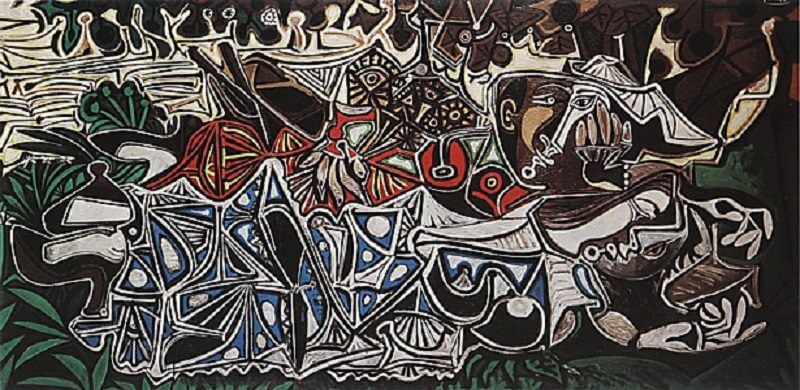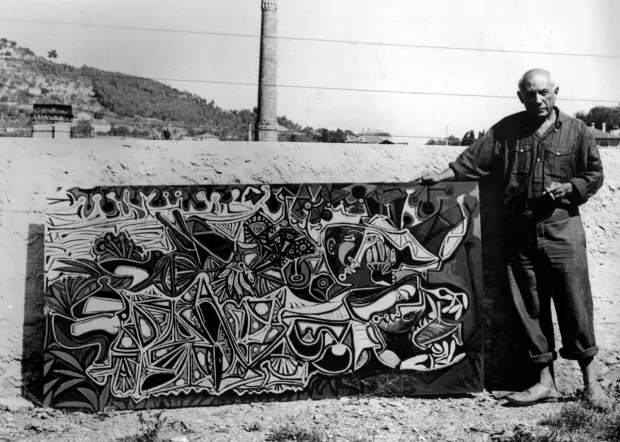Young Ladies on the Banks of the Seine, 1950 by Picasso

This painting has deviated from The Young Ladies on the Banks of the Seine of Gustave Courbet. Courbet's painting depicts two indolent young Parisiennes lying in the grass under overhanging trees in a secluded spot on the banks of the Seine. Picasso deviated substantially in his variation from the dimensions and arrangement of Courbet's painting. While keeping almost the same length as the French painter's work, he cuts off the upper third of the canvas, leaving his figures confined in a long restricted rectangle. Courbet's sensual, curvilinear forms and painterly style have been converted into an opposing linear idiom, which nevertheless retains spirit of the original submitted to new rules: the figures are compressed into two dimensions and broken down into small, brightly-color swelling shapes outlined in black and white and filled in with color (as in stained glass), and stacked one above the other.

This new decorative mode of "lines and curves converging and diverging from nodal points" was first used by Picasso to ornament Pierre Reverdy's Chants des Moris (1945-48), and carried further in two experimental paintings of 1948 entitled The Kitchen, and in his variation after El Greco.
















